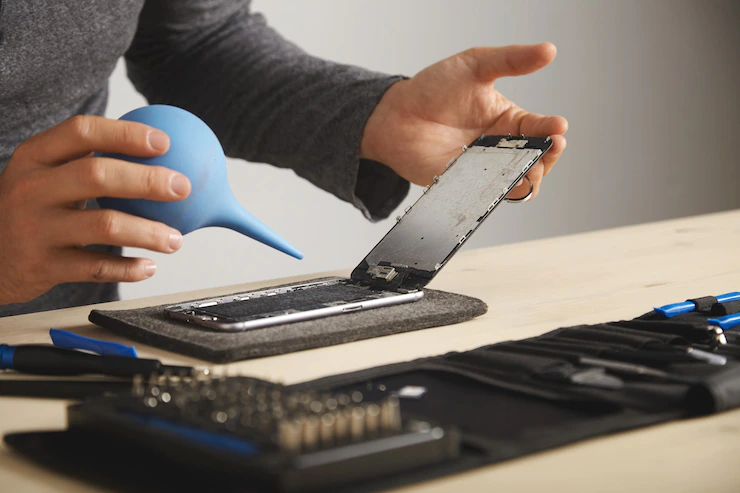If you’re an electrician, you need to have a fully stocked toolbox that contains everything from pliers to wire strippers. But if you’re not an electrician, then it’s still good to have these items on hand just in case of an emergency. Here are some common tools and equipment used by professional electricians:
1. A Good Multimeter
For starters, you’ll want to get a multimeter that can measure voltage, current, resistance, and continuity. Most good multimeters will do this. Next up are AC and DC voltages. If you need to measure DC voltage then make sure your meter is capable of doing so (and vice versa). Thirdly AC and DC currents. Just like with voltage, if you need to read AC measurements then make sure your meter has the capability for it (and vice versa).
2. Electrical Tape
Electrical tape is used to insulate wires and can also be used to identify them. It’s available in different colors, so you can use red electrical tape to repair broken wires, too. You might even use it to make temporary repairs until you have time for a more permanent fix.
3. A Non-Contact Voltage Detector
A non-contact voltage detector is a device that detects the presence of voltage at a particular point in an electrical circuit. It is used to locate live wires, or to detect the presence of voltage in a circuit that is not connected to a load.
4. Common Spare Parts
There are some common spare parts that you can spare to repair your appliances, fridge spare parts being an example. Here is a list of them:
Fuses:
Fuses are designed to protect your home from electrical overloads. If a circuit breaker trips, it’s usually because the electrical demand on that circuit has exceeded its capacity. A fuse will blow when this happens, which is why we call them “safety fuses.” You can purchase replacement fuses at any hardware store in your area or online. While you can repair fuses by replacing their elements with wire, it is best to use new ones instead so that they don’t overheat and burn out again later on down the line (which would require additional repairs).
Light Bulbs:
If you notice that one of your light fixtures isn’t working anymore after an electrician has been there doing some work around your house or if they no longer function as intended due to age, then all you have to do is replace them with new ones! Just remember not to go overboard with how many lights go into each fixture; usually, three bulbs per fixture will suffice unless otherwise specified by an electrician during the installation process itself.”
5. Electrical Wire Strippers
To use a wire stripper, you’ll need to insert the stripped end of the wire into one of the slots in the tool. Then you can use your fingers to rotate it around and tighten down on that section of wire, cutting off any excess. This will prevent you from snipping away too much at once, so as long as you’re careful not to put too much pressure on it and grab hold of your fingers, this is a relatively safe way to go about stripping wires!
But don’t worry—if you’re more comfortable using something else for this job, there are other options available. You could also try an adjustable hand-held cable cutter or even just some basic scissors! The important thing is that whatever tool(s) you choose will match up with what type(s) of cables/wires they’ll be working with…and that’s where we come in!
6. Solar Panels
Solar panels have become an increasingly popular home improvement. They can be used to power your home, charge batteries, or even charge up your car. New solar panels are one of the most common spare parts for electricians. Solar panels are used in various places, such as in homes, offices, and even factories.
7. Combination Pliers
Combination pliers are multi-purpose tools that can be used for a variety of tasks. They have a strong grip and can cut, strip and crimp wires. The jaws on combination pliers are serrated, so they can be used to cut wires with insulation or metal pipes. In addition to cutting, stripping, and crimping, combination pliers can also remove pins from terminals in electrical connections.
If you’re looking for an electrician’s tool that has multiple uses, a pair of combination pliers may be the right choice for you!
8. Pressure Switch
Pressure switches are used to monitor the pressure of a fluid in a system, such as water or steam. They can also act as an on/off switch for pumps, valves, or motors based on this pressure switch.
Pressure switches come in three types:
- Adjustable – This type allows you to set your own upper and lower limits for triggering it on and off.
- Limit – With these, there is no way to adjust them after installation; they simply trigger when exceeded by a certain amount.
- Non-adjustable – These are exactly what they sound like: non-adjustable after installation.
9. Screwdrivers
Screwdrivers are used for a variety of tasks. They’re essential for home electrical repairs, but they can also be used in other kinds of repair work. A screwdriver has two parts: the shaft and the tip. The shaft is what you hold on to, while the tip provides direct contact with whatever it’s being used on.
The main difference between types of screwdrivers is in their size and shape. Some are flat blades that fit into cracks, while others have rounded edges designed to fit flush against a surface so you don’t end up damaging what you’re working on by applying too much pressure or force with your hand (you’ll still need to apply some force when using these).
One type of screwdriver has a square-shaped head instead of a rounded one, which makes it easier to reach tight spots where other types might not go without causing damage or making noise when scraping against something else nearby (like another tool).
There are also different types based on whether they’re made out of plastic material versus metal—which one works best depends entirely upon what kind of job needs doing at any given time!
10. Fish Tape
A fish tape is a flexible metal rod with a hook on the end. It’s used to pull wires through conduit and to guide wires through walls, ceilings, floors, or any other enclosed area that you can’t fit your hand into. It’s essentially like threading a needle but with wire instead of string!
The best part about using this tool is that you don’t need to worry about snagging or damaging your wiring—it’ll slip right through if you’re careful enough.
11. Wire Nuts
Wire nuts are used to connect two or more electrical wires. They create a watertight seal that prevents any moisture from getting into your home’s electrical wiring.
It’s important to use the right size wire nut for your project, so you can rest assured that it’ll do its job properly. Wire nuts come in several sizes: #6 (the smallest), #8, #10, and #12 (the largest). If you’re installing a light fixture or other small appliance with newer wiring, then you should be fine using a #6 or even a #8 wire nut if needed. But if you’re working with older homes where there’s no ground wire attached to fixtures or appliances like ceiling fans and lights, then use a larger-sized wire nut so that it has enough room for all the wires in your splice job.
12. Electricians Tape
Electrician tape is a versatile tool that can be used for a variety of things. It’s commonly used to secure wires, insulate wires and hold them together. Electricians also use it to make sure that the connections are tight enough so they won’t come undone during electrical repairs.
13. Pin Gages
Pin gages are precision tools used to measure the diameter of holes, the distance between surfaces, and the thickness of materials. They are commonly used in manufacturing, engineering, and quality control applications where precision and accuracy are essential.
Pin gages are also used as spare parts in machinery and equipment that require regular maintenance or repair. By having pin gages readily available as spare parts, operators can quickly replace worn or damaged parts and maintain the accuracy and precision of their equipment.
Conclusion
So there you have it, a list of electrical tools and equipment to help you with your home electrical repairs. There are many more types available but these are some of the most common that you will need when doing any kind of work in this area. You must choose the right tool for the job so make sure before buying any products that they meet all safety requirements in terms of material composition as well as being able to handle heavy-duty tasks.
Additionals:




























